In 2018, the U.S. Department of Justice allowed the re-release of 3D printed gun designs created by Cody Wilson. “The Pandora’s box has been opened.”
The stories we hear about 3D printing have often been shrouded in warmth and kindness—such as its use in printing prosthetics and creating new medications.
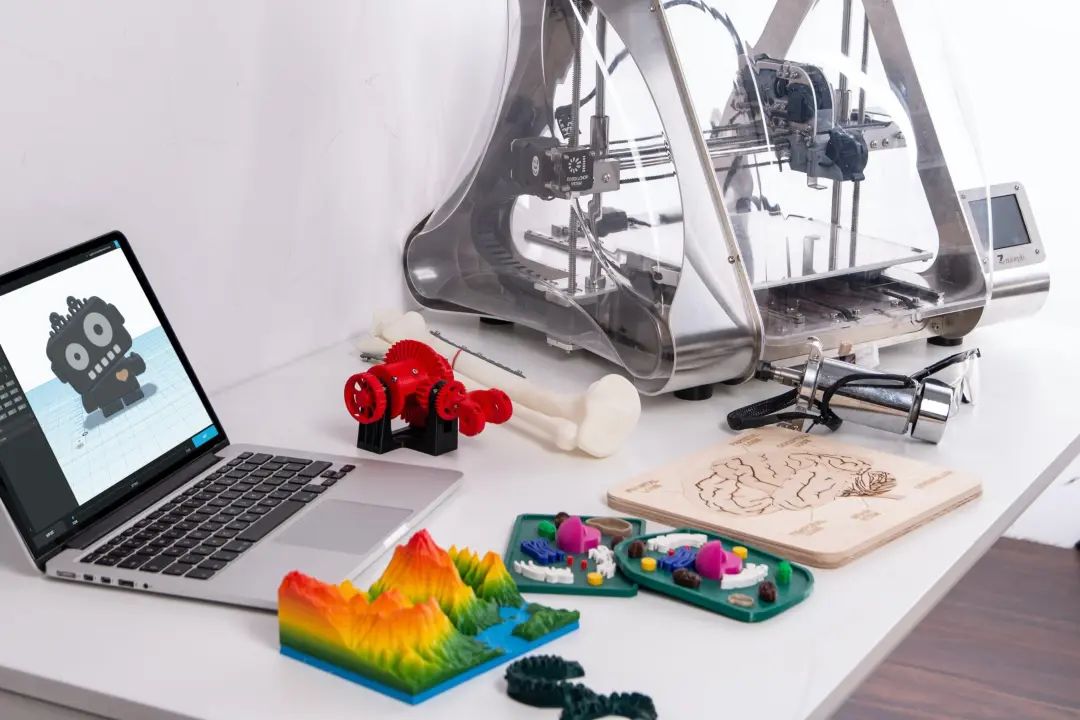
3D Printing | Photo by Xiaole Tao on Unsplash
On the other side of technological development, 3D printing has led to a significant increase in the number of “ghost guns” (firearms without serial numbers that cannot be traced), greatly complicating gun control efforts. In the U.S. alone, the Department of Justice reported nearly 24,000 “homemade firearms” seized at crime scenes from 2016 to 2020.
People are anxious, as anyone can easily purchase a 3D printer from any e-commerce platform.
To make a homemade handgun
Some individuals abroad participated in a “gun-making” competition to test the power of 3D printed handguns.
Keegan Hamilton initially aimed to create a semi-automatic handgun named “Scorpion” (which fires one bullet per trigger pull). Due to a buying frenzy triggered by tightening regulations, some parts for ghost guns were out of stock.
The out-of-stock metal components are crucial; while the strength of 3D printed plastic is sufficient to support the gun body, plastic cannot withstand the high temperatures and pressures required for the “barrel” and “bolt.”
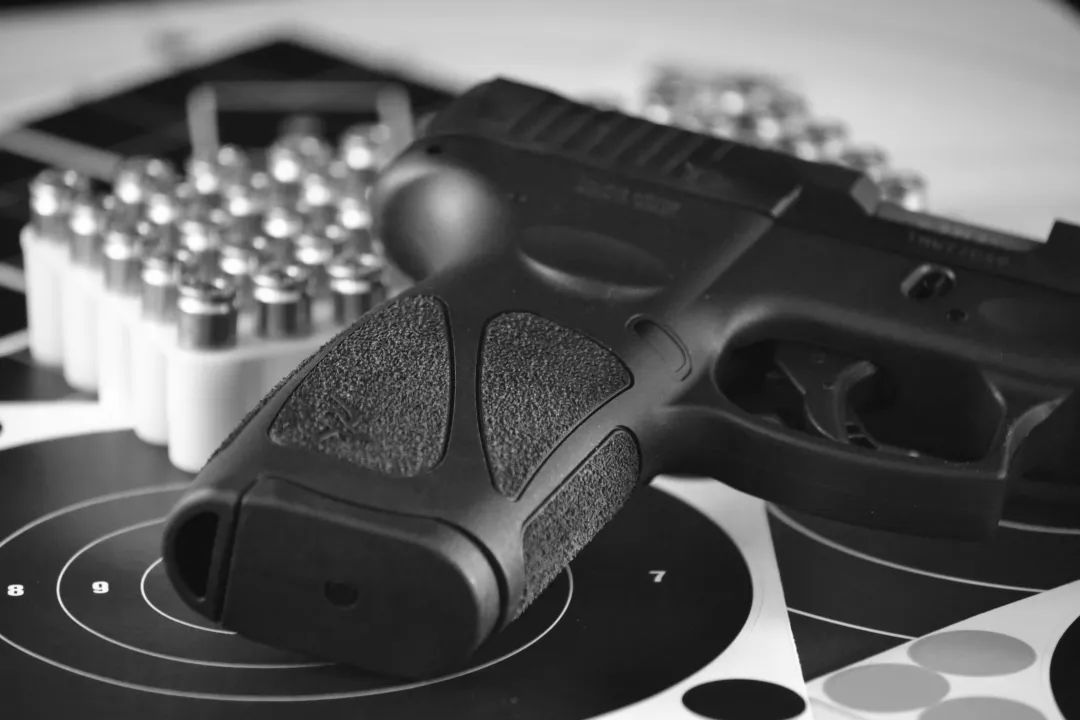
U.S. federal law requires firearms to have at least one metal component | Photo by Bo Harvey on Unsplash
At the same time, it is illegal to create a 3D printed firearm made entirely of plastic. U.S. federal law mandates that firearms must contain at least one metal component. The Undetectable Firearms Act has been in effect since 1988, requiring that firearms contain a minimum of 3.7 ounces of steel to be detectable by metal detectors.
Ultimately, Hamilton chose to make a “Glock 19,” for which the components were easier to obtain. The metal parts, including the barrel, slide, and trigger, cost a total of $320 and could be shipped directly to the shooting range in Florida for the competition. Besides that, he needed only a $23 roll of PLA+ filament, a 3D printer, and a few boxes of 9mm ammunition. He didn’t have to worry about how to design the handgun.
On a website established by Cody Wilson, anyone can access the 3D printed handgun blueprints for a membership fee of $50. This includes the world’s first 3D printed handgun, “The Liberator.” Wilson quickly caught the attention of the U.S. government because the production files for “The Liberator” spread online, leading to over 100,000 downloads.
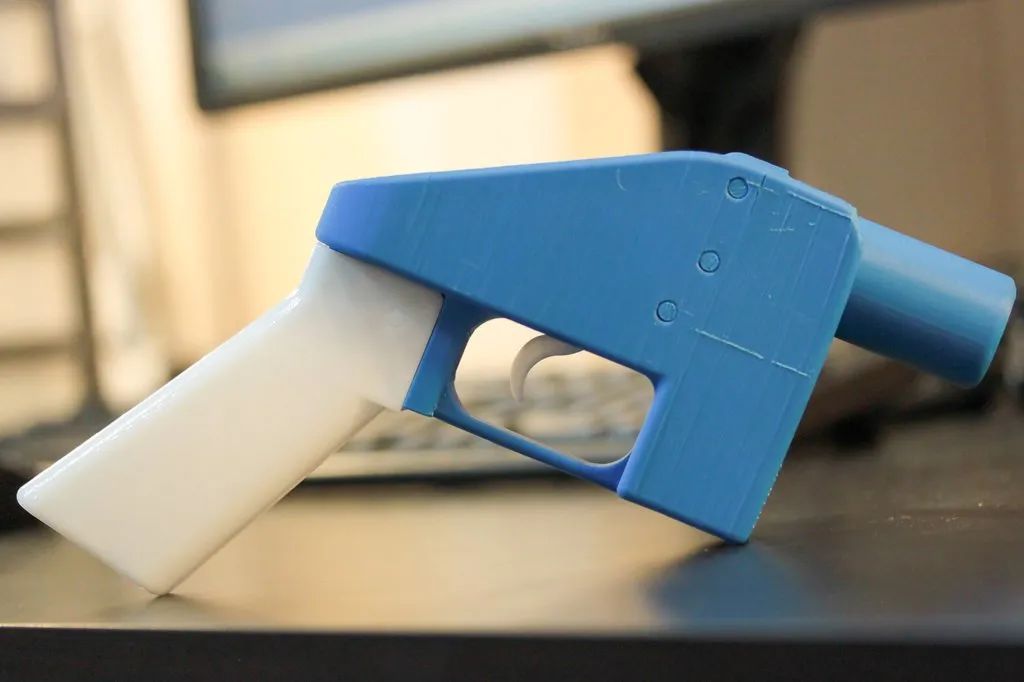
The Liberator | Wikipedia
At the end of the 20th century, 3D printing technology began to emerge. It operates on principles similar to those of regular printers, with materials such as metal, ceramics, plastic, and sand loaded into the printer. Based on computer-generated designs, materials are laid down layer by layer, ultimately forming a real 3D object.
On Taobao, home-grade 3D printers for printing figurines are priced around 2000 yuan, while industrial-grade ones generally start at over 6000 yuan, with some costing over 10,000 yuan. Of course, the technologies they use differ. Home 3D printers mainly use basic, inexpensive FDM (Fused Deposition Modeling) technology, while industrial-grade printers cover SLA (Stereolithography) and SLS (Selective Laser Sintering) across the entire industry.
Printing firearms is essentially no different from 3D printing other items. The components are printed separately and then assembled together. The design blueprint is the key.
To obtain the blueprints, Hamilton registered as a member of the website. Ultimately, the cost of his “Glock 19” was less than $400. The main body of the gun took 16 hours to print, and when he removed it from the printer, he noticed some obvious differences compared to a “real gun”—it had no serial number, the grip was marked with the words “Ghost Gun,” and the edges were rough, making it impossible to directly insert metal components. He then spent another four hours sanding the plastic with a file and other tools.
The finished product felt heavy in his hand, and when he pulled the trigger, the first bullet hit a metal target 15 meters away.
After more than twenty hours of production, Hamilton went to compete. However, due to constant jams while shooting, he had to switch to “regular” Glock brand slides and barrels. It was evident that 3D printed guns are not as reliable for continuous and prolonged use as traditional firearms.
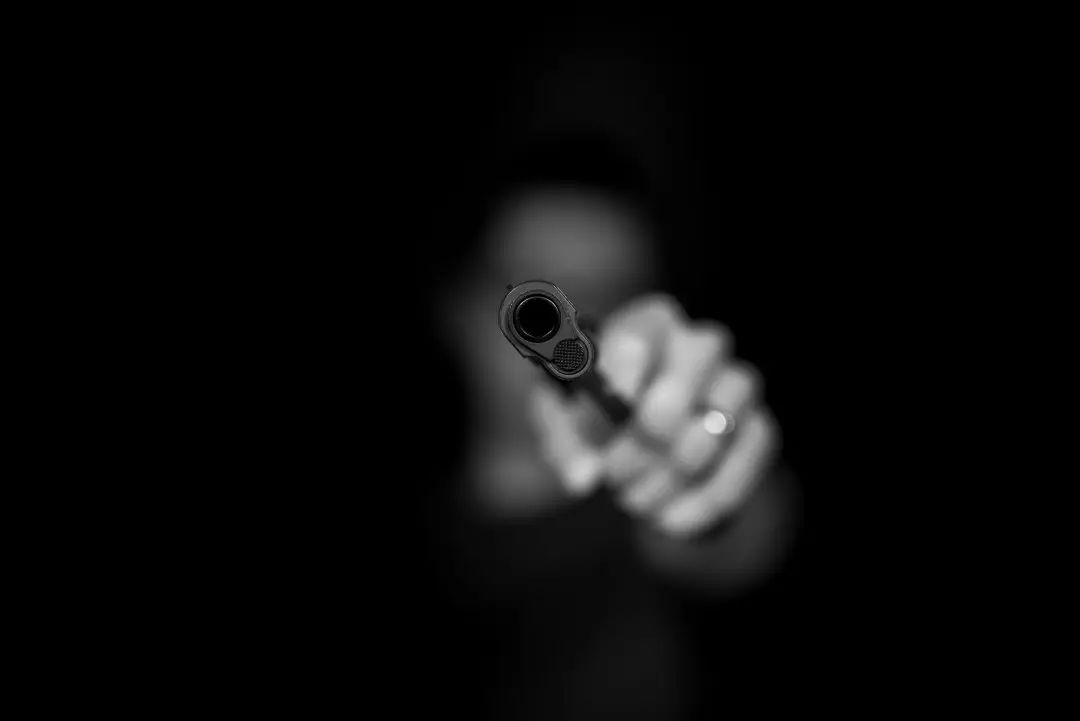
The core components of traditional firearms are standard metal parts, such as barrels, bolts, and hammers. The strength of parts produced by so-called metal printers is far below standard | Photo by Max Kleinen on Unsplash
According to the Science and Technology Daily, the burst strength of a barrel (the ability of the chamber wall to withstand a certain pressure from gunpowder gas without deforming) depends on the thickness of the chamber wall and the quality of the materials used. The strength difference between metal barrels and ABS materials leads to significant differences in burst strength; if the burst strength is lower than the pressure from gunpowder gas, the barrel will explode.
The core components of traditional firearms are standard metal parts, such as barrels, bolts, and hammers. The strength of parts produced by so-called metal printers is far below standard.
In the end, Hamilton placed third in the competition, and afterward, he chose to melt down the gun body. He once asked Wilson if the U.S. authorities had any hope of completely stopping “those blueprints” from being shared online. Wilson replied, “The government should have invented a machine to kill me seven years ago. But now it’s too late.”
A law student exploiting legal loopholes
In 2012, while studying law at the University of Arkansas, Cody Wilson designed and created the world’s first 3D printed handgun.
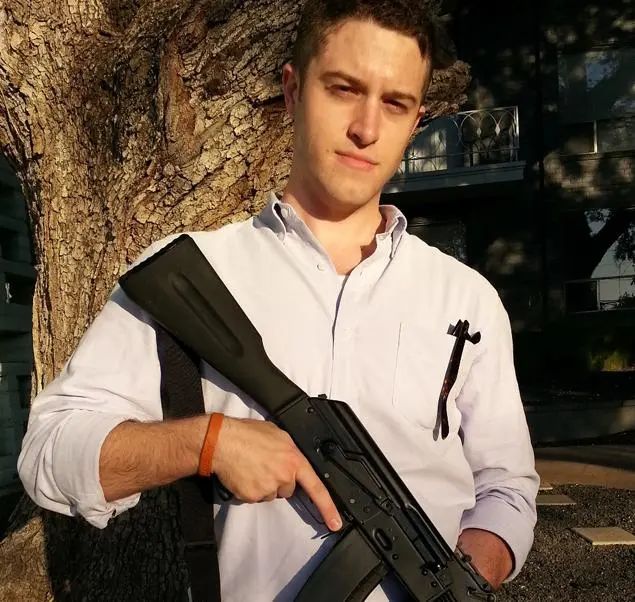
Cody Wilson | Wikipedia
Using only a home 3D printer, he printed 16 parts from ABS plastic and assembled them together, resulting in a toy-like object that was, however, a “real gun” capable of firing bullets, albeit with significantly less power than traditional handguns. Wilson named this gun “The Liberator.”
He also founded Defense Distributed (DD), a non-profit organization aimed at developing and publishing open-source gun designs, aspiring to become “Wiki Weapons.” 3D printed firearms require several elements: a printing machine, materials, a computer, and supporting software and design blueprints. The founding purpose of DD was to make these critical design blueprints for 3D printing publicly available.
In 2013, he posted the design blueprints for “The Liberator” online, but the U.S. government quickly intervened, demanding that Wilson withdraw the blueprints.
U.S. law recognizes citizens’ right to bear arms, but only if gun purchasers undergo background checks. Individuals with mental illnesses, minors, or criminal records cannot obtain gun purchasing qualifications. Additionally, U.S. law requires firearms to contain metal for detection by metal detectors. These guns are marked with serial numbers, allowing police to trace criminals in the event of a homicide.
However, 3D printed handguns changed all of this. From the government’s perspective, this meant that anyone, regardless of their background, could manufacture a killing machine if they obtained the blueprints, as long as they had a printer, a computer, and inexpensive materials. Moreover, these guns are difficult to trace.
The government informed Wilson that publicly sharing the blueprints violated the International Traffic in Arms Regulations (ITAR), arguing that once the blueprints spread on the internet, people worldwide could download them, but ITAR prohibits the transfer of weapon technology abroad without explicit permission from the U.S. government.
Wilson dropped out of school and began suing the government. “I am not making guns for you; I am merely providing a possibility, a possibility for you to create guns for yourselves.” He sought to determine whether publishing technical data was illegal and whether sharing files equated to exporting firearms.
Lawsuits are laborious and costly. Wilson began exploiting legal loopholes; in the U.S., the sale and transportation of firearm components are not subject to regulatory intervention. He started selling a black box called “Ghost Gunner,” which is actually a milling machine used to manufacture the critical lower receiver of firearms, and also sold completed lower receivers.
From 2012 to 2014, sales of these components exceeded $3 million.
In July 2018, DD unexpectedly won the lawsuit. The U.S. Department of Justice ruled that Americans could “access, discuss, use, and replicate” technical data. Wilson declared victory, stating that 2018 marked the beginning of the “downloadable gun era.”
The law’s response to 3D printed firearms
Many critics worry that this will lead to an increase in ghost guns, making it impossible for the government to track them. If these 3D printed handguns fall into the hands of extreme violent individuals, it could lead to tragedies.
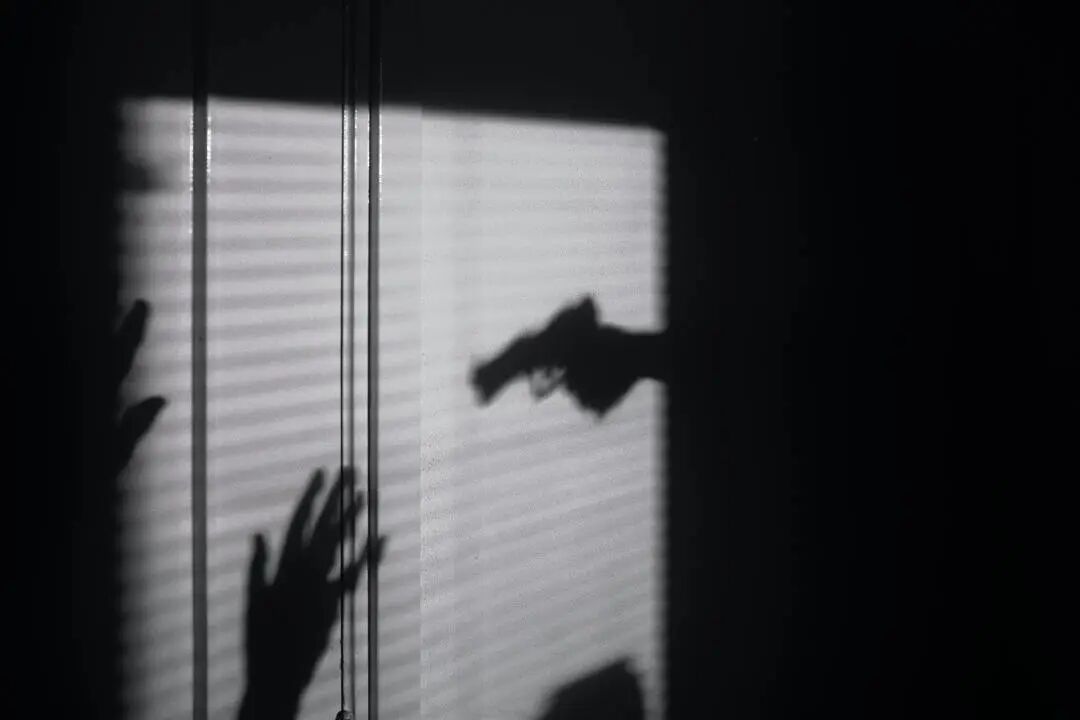
The “gun enthusiasts” Wilson refers to will seek out 3D printed handgun blueprints, and so will extreme violent individuals | Photo by Xiaole Tao on Unsplash
In 2019, a German man shot at a cemetery near the Halle synagogue with a shotgun, killing a passerby and attempting to storm the church with homemade explosives. Chillingly, the perpetrator even live-streamed the attack.
Afterward, police discovered that his weapon had been 3D printed.
In 2021, the Spanish National Police discovered a workshop on Tenerife Island where weapons were made using 3D printing, arresting one person and seizing two 3D printers along with various components for ammunition, silencers, magazines, carbines, and weapon manufacturing.
Police also found gun holsters bearing neo-Nazi symbols on-site.

Legislation worldwide is cracking down on 3D printed firearms | Photo by Tingey Injury Law Firm on Unsplash
The U.S. Gun Control Act of 1968 states that selling homemade firearms without a license is illegal, but manufacturing and possessing homemade firearms is not.
However, the specific laws vary significantly across U.S. states. In New Jersey, it is strictly illegal for individuals to buy parts to create firearms that are not included in a traceable system. They need a manufacturing license to 3D print firearms. In California, individuals must apply for a serial number before creating homemade firearms and must also imprint identification marks on the ammunition casings. Other states have similar laws or are planning to implement them.
Other countries are also cracking down on 3D printed firearms.
In New South Wales, Australia, legislation equates possessing 3D printed firearm blueprints with actually possessing a 3D printed gun. Those found with design blueprints face penalties of up to 14 years in prison.
In Singapore, relevant arms laws stipulate that possessing 3D printed firearms will result in imprisonment; using or attempting to use firearms will result in the death penalty.
It is worth noting that 3D printed firearms pose significant safety risks to their holders. For instance, during the federal investigation of “The Liberator,” there were incidents of the weapon exploding; the perpetrator of the Halle synagogue attack also mentioned in the live stream, “I successfully proved how absurd makeshift weapons are,” as the handgun malfunctioned.
Wilson named the first 3D printed handgun “The Liberator.” Regardless of what it liberated, it certainly unleashed a demon.
Guokr
Finally, I want to emphasize once again:
According to Article 125 of the Criminal Law, in our country, illegal manufacturing and storage of firearms and ammunition can result in imprisonment for three to ten years; in severe cases, it can lead to imprisonment for more than ten years, life imprisonment, or the death penalty.
References
[1] https://www.vice.com/en/article/bvzak4/ghost-gun-glock-3d-printing
[2] https://zhuanlan.zhihu.com/p/42841344
[3] https://edition.cnn.com/2013/11/08/tech/innovation/3d-printed-metal-gun/index.html
[4] http://www.3ders.org/articles/20130805-upgraded-worlds-first-3d-printed-rifle-fires-14-shots-before-breaking.html
[5] https://reason.com/2021/05/14/atfs-proposed-rules-threaten-a-legal-mess-but-no-end-to-ghost-guns/
[6] https://all3dp.com/1/3d-printed-gun-firearm-weapon-parts/
[
Authors: Shen Zhihan, biu
Editor: Wo Chong
This article is from Guokr and may not be reproduced without authorization.
If needed, please contact [email protected]
